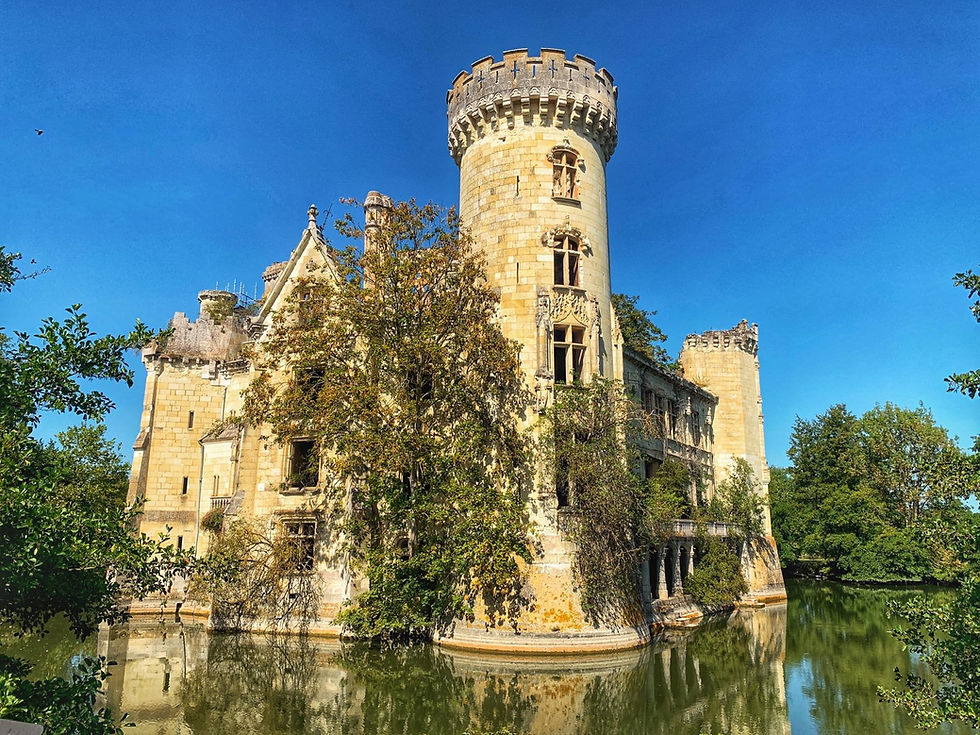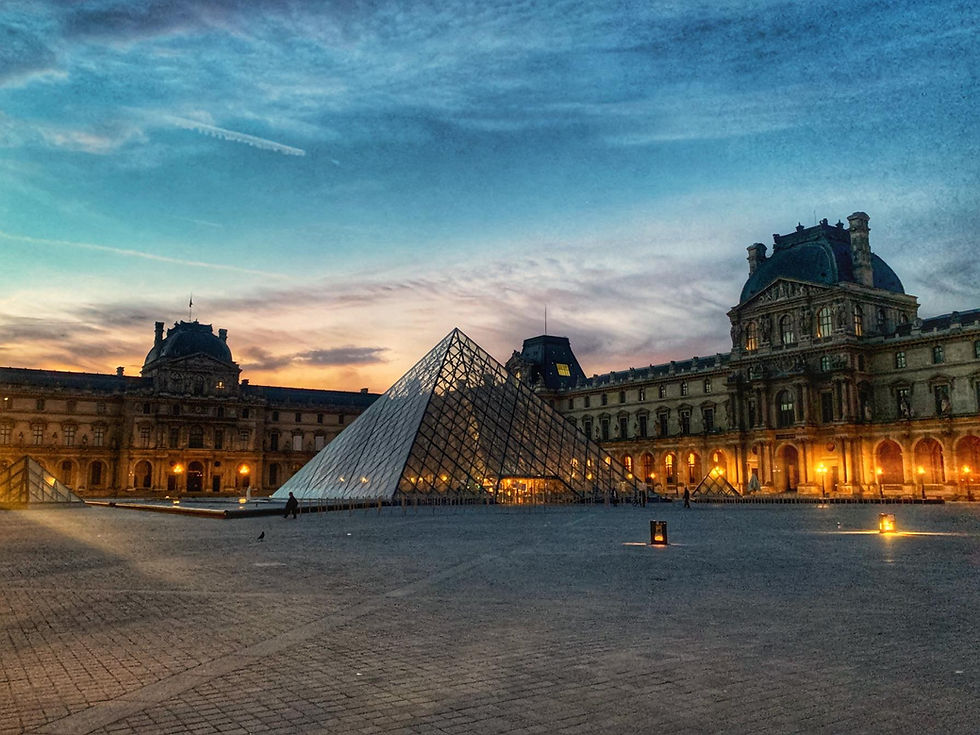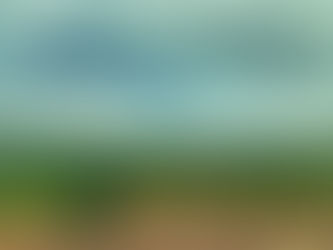Explore France's Top Ten Destinations
- thebrieadventure

- Nov 19, 2019
- 7 min read
Updated: Apr 28, 2020
France is home to many of Europe's most popular and iconic destinations as well as many hidden gems. Throughout the year and across every corner of the country, there is something unique to explore. Which of these top ten destinations have you visited?
Provence Lavender Fields
Provence is just short trip from the French Rivera and internationally famous for its unparalleled lavender fields. Late June to early August is the best chance to see the fields in full bloom particularly in the regions to the north of Aix-en-Provence and to enjoy the picturesque neighboring town Avignon where the sky is the limit in terms of lavender products available. The long bright purple rows of lavender are made even more beautiful by the stone bories that dot their perfectly symmetrical lines. There are numerous single and multi-day trips available throughout the region, but it is also possible to explore the fields by car or bicycle.
Mont Saint-Michel

One of the most easily recognizable landmarks, Mont Saint-Michel is a remarkable stone fortress on an island several hundred meters off the coast of Normandy. At high-tide the high walls of the fortress and the surrounding water made it nearly impenetrable during the hundred year war. The abbey on the island was later used as a prison before being declared a historical monument and then a UNESCO World Heritage Site. The island is still home to approximately 30 residents year round and despite the small number of locals that live there, nearly 3 million tourists visit this iconic destination every year.
Chamonix
Known as a world-class ski destination, this sleepy town on the border of Switzerland boasts numerous activities for outdoor enthusiasts year round. From ice-climbing to mountaineering, Chamonix is a charming get-a-way that welcomes visitors to its quaint streets and offers spectacular views from its peaks. While you are there, don’t forget to try some mouthwatering French cuisine at reasonable prices from any of the local restaurants.
Monet’s Garden

Step into the origin of the French Impressionist era of art, walking through the whimsical garden of Claude Monet and crossing the small green bridge that graced many of his most notable paintings. The gardens are open throughout the year, but spring is the most popular time to visit in order to see the gardens at the height of their glory.
Sip through Champagne Region

Located approximately 1 hour by train from Paris, Reims and Epernay are easily accessible for a quick trip. Origin of the “Devil’s Juice,” the name champagne is reserved for only grapes grown in this region to maintain the integrity of the quality associated with the bubbles. While the process is the same for making other sparkling wines like Sekt from Germany, Prosecco from Italy, etc. there is a distinct difference and standard associated with the name Champagne.
Epernay- the true heart of the champagne region is a small city with a population of less than 24,000. However, it is home to the most expensive vineyards in the world which produce three varieties of grapes: chardonnay, pinot noir, and pinot meunier. Despite production being limited to maintain control of the market, there are over 300 million bottles are produced every year. Restaurants and cafes line the streets of the small city and offer guests the chance to sample some of the best varieties of champagne.

Avenue de Champagne- Known as the richest street in the world, the Avenue de Champagne crosses over labyrinths holding billions of dollars worth of champagne bottles. Claude Moët the founder of Moët & Chandon was the first to excavate a champagne cellar before many of the surrounding houses followed suit in storing their champagne subterraneously to maintain the temperature. These caves also offer a rich history from Napolean's frequent visits to their role in providing refuge for the local villagers during both World Wars. Parts of the caves are open today for visitors to explore.

Reims- many of the world’s best Champagne houses fill the city with iconic labels like Veuve and Tattinger offer tasting and tour combinations to learn about the production process, the history of the house, a tour of their caves, and of course a tasting at the end to sample some of their best bubbles.
Explore the Castles and Royal Gardens

While Versailles may claim one of the highest number of tourists that visit a palace per year in Europe, largely due to its close proximity to Paris, there are numerous other castles and formal royal residences within a day trip of France's capital. Less than a three hour drive south of Paris are two unique ones that should not be missed: Château de Chenonceau and Château de la Mothe-Chandeniers.
Château de Chenonceau is the most famous castle in the Valley of Loire and is known for its history of powerful women which reads like a novel. From royal mistresses to vengeful queen’s, these powerful women are credited for much of the castle’s unique structural design spanning the River Cher and the following expansion of the structure and the surrounding gardens.

Conversely, Château de la Mothe-Chandeniers is an abandoned castle which made headlines in 2017 for the over 7,400 “owners” from all over the world that donated money to purchase it. This was one of the first crowdsourced fundraisers where contributions raised from the internet has assisted in the restoration of a historic castle. Built in the 13th century, the castle was later ransacked during the French Revolution and then was ravaged by a tragic fire in the 20th century. The owner at the time, not being able to afford the extensive renovations required, abandoned the castle which has since been overgrown by trees. While the inside of the Château is still closed for renovations, the public is welcome to come explore the grounds and the ticket profits are donated to the ongoing repair efforts.
These two castles plus a stop at one of the local vineyards is a perfect way to escape into the rolling French countryside for a day.
Bicycle Alsace on the “Route du Vin”

The rolling hills with carefully landscaped vineyards are dotted by small villages nestled into the picturesque Alsace in East France. The famous Alsatian Wine Route from Strasbourg to Colmar passes through vineyards that claim some of the most award winning Riesling and Gewurztraminer wines in the world. The rich cultural heritage in Strasbourg, a UNESCO World Heritage Site, is just the beginning of the adventure through the Vosages mountains. This region is also known as a gastronomy destination with the most number of Michelin star restaurants in one region. Many companies offer multi-day tours through the region that visit several of the small charming villages and castles along the route or it is easy to create your own adventure by renting a bicycle from one of the numerous bicycle shops along the route. With all the calories you are burning pedaling between stops, it is easy to eat and drink your heart out guilt free!
Colmar and Strasbourg Christmas markets
Strasbourg officially became the Capital of Christmas in 1992 which seems to be a fairly accurate title due to the extensive illuminations and extravagant decorations around the entire historic part of the city. The history of the markets in the city date all the way back to 1570, which makes them one of the oldest in all of Europe and the first in France. Although historic records of Strasbourg show that it held a Klausenmärik (Saint Nicolas market) on the 6th of December, the famous Christkindelsmärik (Christmas market) began when the Klausenmärik was abolished in an effort to remove ties to Catholicism.
Another unique tidbit of history with this market is that because Strasbourg was originally a part of the German Rhineland but later became a French city, it has retained traditions from both sides of the border. Although the cathedrale Notre-Dame de Strasbourg undoubtedly steals the show with its stunning details and beautiful bells, the massive 30-metre-tall tree at the heart of the city in the Place Kléber is a very close second. Pictures simply do not do this enormous Christmas tree justice which is several feet taller than even the tree in NYC at Rockefeller Plaza!
Colmar is one of the only cities which keeps their Christmas Market open even on Christmas Day. The cobblestone streets winding through the old town of half-timbered medieval and early Renaissance buildings looks like a post card come to life. There are several squares around the city with stalls offering everything from the traditional Christmas oysters and champagne to some of the most delicious Käsespätzle (a mess of macaroni and cheese style noodles with bits of meat) and Bière De Noël. The Marché de Noel Colmar becomes more lively as the day wears on and by sunset the streets are filled with families celebrating the end of Christmas in one of the most magical markets in Europe.
French Riviera

Situated on the Mediterranean Coast, the Côte d'Azur is one of Europe’s most glamorous holiday destinations with its well-kept beaches and promenades paired with the historical stone-cobbled city centers which are dominated by excellent nightlife. While the Cannes film festival keeps this southern region of France at the center of attention, there are several other cities that make up the French Riviera which are well worth visiting. Nice, Marseilles, Saint-Tropez, and Cassis are several of the noteworthy towns in the French Riviera which are all easily accessible by train. A-listers and some of the world’s wealthiest frequent the area which is not surprising considering the azure blue waters and long coastlines which are filled with glitzy accommodations and red-carpet events.
Paris
No list of France’s best destinations would be complete without its monumental capital, the City of Lights. Whether it is a long layover or an extended holiday, there are endless options of iconic landmarks and world-class art museums to discover. The Eiffel Tower, Arc de Triomphe, the Louvre Museum, Sacre Coeur and the Notre Dame are just a few of the iconic destinations that draw millions of tourists each year, but there are even more lesser known museums and churches that make this one of Europe’s most popular capitals and a global center for gastronomy, fashion, art, and culture.















Comments